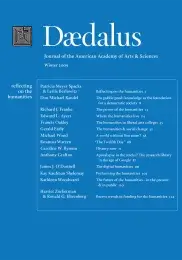Where the humanities live
In 1964, the historian J. H. Plumb announced a crisis in the humanities: “Alas, the rising tide of scientific and industrial societies, combined with the battering of two World Wars, has shattered the confidence of humanists in their capacity to lead or to instruct.”1 Plumb’s lament would not be the last; indeed, in every decade since 1964, in addresses to professional organizations and in op-ed pieces, on blogs and in commencement speeches, humanists and their critics have warned of one crisis after another. Sometimes challengers from outside–scientists, social scientists, administrators, politicians, or advocates of corporate or utilitarian values–threaten. At other times, humanists themselves come off as the culprits, trafficking in obscurity, reaction, or political correctness. Whatever the cause, those who worry have no trouble finding signs of crisis: declining proportions of students and faculty positions, low funding inside the university, a diminished audience beyond the academy, disorienting shifts in the demography of students and faculty, and dislocating theoretical importations and innovations.2
Surprisingly, however, today the humanities in the United States are holding their own in an intensely competitive jostling of universities, departments, and faculty for students and resources. As the Humanities Indicators Prototype sponsored by the American Academy of Arts and Sciences reveals, humanities disciplines show signs of regained balance, integration, and growth, even if other fields, often vocational, are growing faster. Humanities faculty and what they teach retain authority and respect in public and private institutions, large and small. Many thoughtful and articulate students in the best schools in the country emerge with degrees in the humanities. Faculty and students from around the world come to the United States to share in its broad and robust tradition of humanistic research and teaching.1
To understand why the tradition of crisis shapes our thinking and self-perception, even while some of the reasons for worry have abated, we need to understand the many contexts in which the humanities live. They live in departments and disciplines, of course; but they also live in new places, in new forms, and in new combinations. . . .
